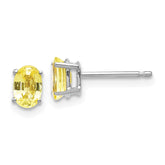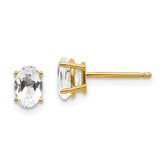Photo by Tahlia Doyle
The Evolution of Diamond Cutting: A Fusion of Art, Science, and Innovation
Diamonds, renowned for their enduring allure and exceptional fire and brilliance, have captivated humanity for centuries. This fascination has driven the evolution of diamond cutting techniques, which have progressed from traditional forms to advanced, patented designs that continually push the boundaries of precision and aesthetics. The diverse range of diamond cuts we observe today reflects a deep respect for historical craftsmanship and an unwavering pursuit of innovation, ensuring that these gemstones remain highly coveted.
The Origins of the Round Brilliant Cut
The round brilliant cut, which originated in Venice in the 17th century, stands as one of the oldest and most prevalent diamond cuts. This specific cut is particularly well-suited for diamonds with an octahedral crystal structure, despite the fact that the cutting process can result in the loss of nearly 50% of the original rough stone. However, an octahedron often provides an opportunity to fashion two diamonds from a single crystal. Raw stones with irregular shapes are often utilized for fancy cuts, such as the marquise, pear, or heart shapes. Early brilliant cuts featured 17 facets on the crown and were labeled as double-cuts. Subsequent innovations led to triple-cut brilliants with 33 facets, significantly enhancing their brilliance and light performance.
The Art and Science of Diamond Cutting
The process of cutting a diamond entails a delicate balance between art and science, necessitating not only technical proficiency but also a profound understanding of the natural properties of the raw material. Achieving the perfect cut involves aligning the facets in a precise manner to optimize the passage of light through the stone, thereby maximizing its brightness, fire, and scintillation. Even with technological advancements, diamond cutting remains an artisanal craft, as the mastery required to transform a rough stone into a dazzling, faceted gem demands years of experience and a discerning eye for detail.
19th Century Advancements and Tolkowsky's Influence
The 19th century witnessed significant progress in gem-cutting tools, facilitating new developments in diamond cutting styles. Innovations such as steam-powered cutting wheels and enhanced abrasives empowered gem cutters to experiment with new facet arrangements, ultimately yielding diamonds with superior brilliance. In 1919, Marcel Tolkowsky integrated artistic craftsmanship with the science of light refraction, publishing his influential work, Diamond Design. Tolkowsky's pioneering calculations laid the foundation for modern diamond cutting, where meticulous precision is employed to optimize the fire and brilliance of diamonds.
Modern Diamond Cuts and Their Unique Qualities
The transition from early brilliant cuts to more sophisticated designs has given rise to numerous innovations, with each iteration striving to enhance the stone's interaction with light. Today, a broad selection of diamond cuts exists beyond the classic round brilliant. Popular modern cuts include the princess cut, trillion cut, oval, pear, and heart shapes. Each of these cuts possesses unique properties and is designed to accentuate different qualities in the diamond. For instance, the princess cut, with its sharp, angular facets, is renowned for its contemporary appearance and exceptional sparkle. Conversely, the oval cut's elongated shape provides a larger surface area, making it a preferred choice for those seeking a diamond that appears larger than its carat weight.
Innovative and Patented Diamond Cuts
Innovative cutters have ventured into creating diamonds in the forms of stars or butterflies, underscoring the creativity within the industry. These unconventional and intricate shapes demand a high degree of skill to execute, as maintaining symmetry and maximizing brilliance in such atypical forms proves particularly challenging. The Ashoka diamond represents one notable patented cut, characterized by its elongated shape with rounded ends, requiring a rough diamond of at least 3 carats. Revered for its elegance and its enhancement of the diamond's inherent brilliance, the Ashoka cut serves as a testament to the art and science of diamond cutting. Similarly, Tiffany & Co. introduced their patented Lucida cut, an exclusive design that has garnered considerable desirability. Combining elements of both brilliant and step cuts, the Lucida cut results in a distinctive appearance that highlights both fire and clarity. The creation of such patented cuts necessitates a profound understanding of diamond properties and a high level of craftsmanship.
Cushion and Radiant Cuts: A Blend of Vintage and Modern Appeal
Another noteworthy innovation is the cushion cut, which has endured for over a century and has experienced a resurgence in popularity in recent years. Cushion-cut diamonds exude a vintage appeal, with their rounded corners and larger facets that augment their fire. They are often chosen for their romantic, classic look, and modern variations have adapted the cut to maximize brilliance, making it a favorite for engagement rings. The radiant cut, introduced in the 1970s, is another example of a hybrid cut that merges the elegance of emerald cuts with the brilliance of round cuts. Its versatility and sparkle make it a popular choice for those seeking something unique yet timeless.
The Future of Diamond Cutting
The evolution of diamond cuts—from traditional shapes to highly specialized modern forms—illustrates the continuous effort to enhance the natural allure of these precious gemstones. Whether through classic elegance or avant-garde innovation, the art of diamond cutting remains dedicated to maximizing the innate beauty of diamonds, ensuring that they retain their timeless brilliance and captivating sparkle. As technology continues to advance, further innovations will undoubtedly push the boundaries of what is possible in diamond cutting, always striving to enhance the visual impact and desirability of these extraordinary gems. The interplay of tradition, artistry, and scientific precision will undoubtedly keep diamonds at the pinnacle of luxury and beauty for generations to come.























